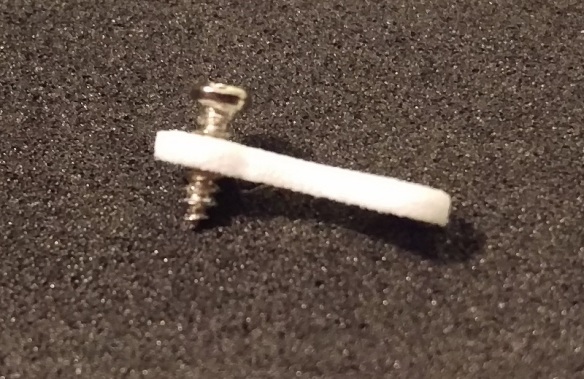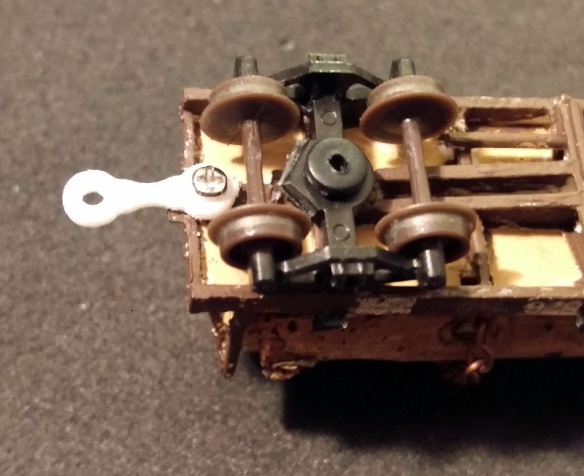In last week’s post I shared with you a simple method of changing generic sounds on a Digitrax sound decoder and how to adjust effects like volumes. You can find the post here. This week I’m going to show you step by step how to completely change the sounds so you can make them match the locomotive you’ve installed your chip into.
To do this you will need an extra bit of DCC equipment supplied by Digitax; their PR3 or PR3EXTRA as pictured below.

This device is designed to connect your computer to your layout to allow computer control or to simply allow you to communicate with your other Digitrax DCC products via their LocoNet system. It can also be used, along with your computer, as a stand alone programmer and that’s what we’re going to do.
Depending on what computer you have and what operating system you’re using, your PR3 may need to have a driver installed, which can be downloaded from the Digitrax site here. Once installed the PR3 is connected to the computer with a USB lead and requires its own power supply, which comes with the PR3. There’s a small twin screw terminal block on the front of the PR3 which is where you connect wires for your programming track. As I’m often doing this at shows I simply have a strip of track with two wires soldered to the end.
The next step is to download and install the software to your computer. Again this is supplied by Digitrax and is called Soundloader and can be downloaded here.
The current version, at time of writing, is v2.2. When you first open the software you get a window that looks like this.

At the bottom of the screen it says ‘Could Not Open COM Port’. This is because it doesn’t know how your PR3 is connected. At the top of the screen on the drop down menu is ‘COM Port’. Select this and it will open a window with a drop down menu. Providing your PR3 in installed and plugged in it will list the com port which you can select. Then the screen should look like this.

The software is now ready to use. When you place a locomotive on the programming track the software will automatically pick up the DCC decoder and interrogate it, as you can see below. The software is finding out what sort of decoder it is; this is important as different decoders are capable of different things.

Once complete the software will display the information in the bottom left of the screen. This decoder is a 16bit Series 6. It also tells me the size of the flash. This is the amount of flash memory, just like a flash drive or SD card you use to store photos in a camera.

The next step is to get your sounds or sound project for your locomotive. There are a few places where you can get them from but the main place is Digitrax’s website here. Sound Projects or SPJ files are not official files, that is to say they are not produced by Digitrax, rather they are created by the Digitrax user community and shared though the site. Another place to get sound files and support is the Digitraxsound Yahoo Group. This is a great site to ask advice and help solve any issues.
Once you have downloaded the file you want you can load it into the software by selecting file and open. The screen will then look similar to this.

The big green button tells us that it’s ready to download the Sound Project to the decoder. If this button is not green then there’s an issue. This could be because the SPJ file is for a different decoder or there’s not enough room on the decoder for your file. For this example you can see the ‘Flash Download size’ is 341248 Bytes and the ‘Decoder Free Flash’ size is 1769472 Bytes, so we have plenty of room. By pushing the green button three things will happen. First, the software will erase the current flash on the decoder; normally the speaker makes a squealing sound when this happens, so don’t panic. Second, the software will download the SDF files; these are the command files which tell the decoder what the sounds are. And third, it will download the Wav files; these are the actual sound bytes and this process takes the longest. Below you can see a screen shot of this happening.

Once complete, that’s it. If you put the loco on the tracks it should play the new sounds. However there are a few traps which you can fall into which may prevent it from working, so I like to use the Sound Test tool first. This can found on the drop down menu and when opened looks like this.

In the image above the Sound Test tool is still reading the decoder. Once complete you should be able to push the relevant buttons and the sound decoder will respond. Another nice feature is you can engage the forward and backward motion to hear the steam chuffs or engine sounds, but the loco won’t actually move. In the screen shot below you can see I’m testing the forward motion with F4 & F7 switched on.

If however you find you get to this stage and you still don’t getting any sounds there are a few things to check. In last week’s post we discussed CV60 which changes between the different sound sets. If, for example, you had previously set the decoder to set 3 and then flashed in a new SPJ file, set 3 will be empty as the new SPJ will load into set 0.
If this still doesn’t work it may be a problem with the SPJ file. I had a similar problem to this recently and was able to get the help from the Yahoo Group. If an SPJ line within the file is not assigned it can cause issues.
Looking again at the screen shot below you can see one of the sounds, 006 DEISEL_RUN_HI, is not assigned. By right clicking on this you can select ‘Restore Association’. If it had previously been assigned it will correct itself. However, if nothing changes right-click again and select ‘Assign Silence’. This will make it associate with a Mute file.

Once the SPJ file has been updated it can be re-flashed onto the decoder and this time all the sounds should play.
As I mentioned before the PR3 can be used to communicate with other devices via the LocoNet system and this is something I will share with you in a later post.





























You must be logged in to post a comment.